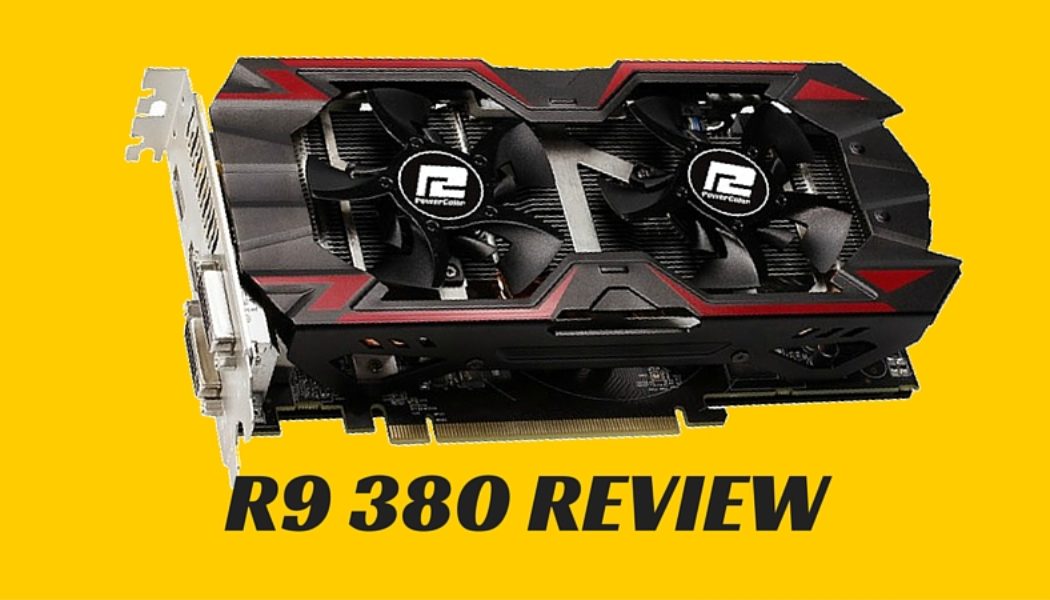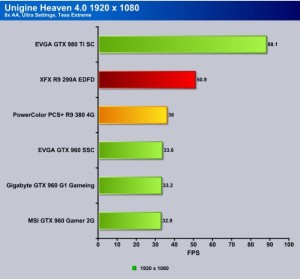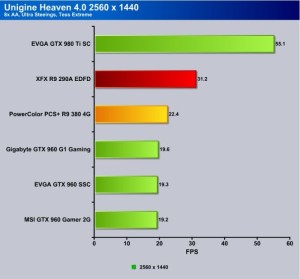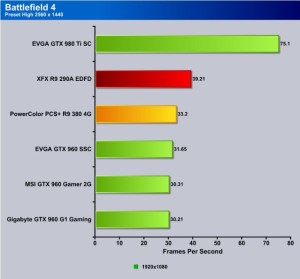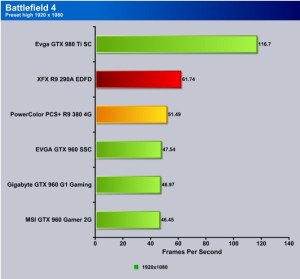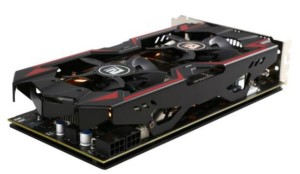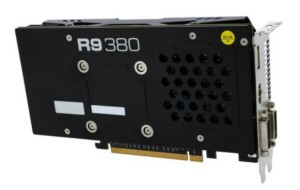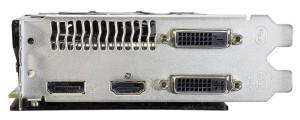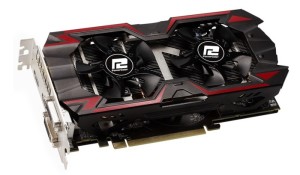With the release of the PowerColor PCS R9 380 4GB, for the first time we see an affordable 4GB gaming solution, a 4GB gaming GPU that runs Rs. 19, 499. Face it, games and gaming resolutions memory demands are exploding exponentially. It takes 2GB GRRD5 to do a good job running 1080p, 4 GB will get you 2560 x 1440 (1440P) and some 4k games using reasonable settings. The amount of GDDR5 on your GPU is the going currency for what resolution and settings you can game at.
While 1080p still is the most popular resolution for gamers, at least for Steam Users (Steam Hardware Survey June 2015) there is no doubt that as the price comes down on 1440p-monitors and to some extend the new more affordable 4k-monitors, gaming at 1440p and higher will become more popular. 1440p in many cases needs 4 GB of high-speed GDDR5 to minimize stuttering and maintain higher framerates.
The PowerColor PCS R9 380 4GB gives you the price, the performance and the GDDR5 ram you need and does it on a 256-bit wide bus with 1792 Stream Processors, and a core speed of 980MHz connected to 4GB of GDDR5 running at 5900MHz. While the R9 380 GPU’s are a re-badge of the R9 285, PowerColor chose to go with significant tweaks that make looking at the PCS+ R9 380 4GB like looking at a completely different card.
Lets start with PowerColors focus on overclockability on the PCS+ R9 380 4GB, how about all digital PWM, an 8 phase (6 +1 + 1) power design driven by PowerIRstage technology to to provide clean conditioned power to the GPU and does so at a reduced power footprint with 3 – 13% power savings. Not enough to impress you yet? The PowerColor name for all this power design is Gold Package running at 93.7 efficiency with reduced conduction loss, lower operating temperatures, high current capacity and ready for Extreme Overclocking.
Overview: The bundle contains a video adapter, literature, and a software/driver disc. We always advise people to get the latest driver direct from AMD’s website as the driver on the optical disc may be a couple of revisions older. Sapphire’s Nitro cooler is very understated which will appeal to the enthusiast audience who have an inherent adverse reaction to flashing lights and bright colours. The PCB is black, to match the matte finish of the cooler. The card measures in at almost 240mm, meaning that compatibility and installation issues are unlikely.
The card is equipped with two DVI ports, one DVI-I and one DVI-D. There is a full sized HDMI 1.4 and DisplayPort underneath an exhaust vent.
There is no HDMI 2.0 on this card, although that is unlikely to annoy HTPC gamers with a 4K TV as the R9 380 is not strong enough to push playable frame rates at a 3840×2160 resolution. It is, however, an annoyance to users who want to occasionally connect their system to their big 4K TV for high-resolution media consumption from the likes of Netflix.
The card takes power from two six pin PCIe power connectors. There are no crossfire connectors on the R9 380 Nitro – as this is based on the R9 285, it has bridgeless Crossfire support. Simply plug in two of these cards into a Crossfire capable motherboard and Catalyst Control Center will enable Crossfire options. TrueAudio is also fully supported.
Specs and Benchmarks: Our testing uses the 1920×1080 resolution as many people buying a sub-Rs. 20,000 graphics card will be gaming on a 1080P monitor. 2560×1440 testing is also included to see how the R9 380 GPU and its 4GB GDDR5 frame buffer cope.
Unigine provides an interesting way to test hardware. It can be easily adapted to various projects due to its elaborated software design and flexible toolset. A lot of their customers claim that they have never seen such extremely-effective code, which is so easy to understand.
Heaven Benchmark is a DirectX 11 GPU benchmark based on advanced Unigine engine from Unigine Corp. It reveals the enchanting magic of floating islands with a tiny village hidden in the cloudy skies. Interactive mode provides emerging experience of exploring the intricate world of steampunk. Efficient and well-architected framework makes Unigine highly scalable:
Unigine is a very tessellation heavy benchmark test and it demands a lot of the partnering hardware. The R9 380 delivers good results at 1080p, although our settings at 1440p prove a little too demanding.
We opted for Battlefield 4’s High IQ preset and did not apply AA in order to make the 60 FPS target obtainable for these cards at 1080P. For 2560×1440 testing, the eye-candy is bumped up to Battlefield 4’s Ultra preset as gamers spending more on a monitor are likely to want higher image quality levels.
Our frame rates are recorded using a section of the game.
Verdict: The PowerColor PCS R9 380 4GB is a good mid-range graphics card that doesn’t break the bank and offers comfortable 1920×1080 gaming performance.
The cooler is a well-designed model that effectively cools the GPU core. Attention is also paid to cooling of the card’s power-switching MOSFETs, which is always good to see on a mid-range graphics card.
Backplates very rarely get used on cards below the higher-end performance scale, but our thermal imaging photos show how a low-cost, heat-spreading backplate would help to mitigate hotspots behind the VRM area. This backplate design could be very simple (a sheet of metal with some thermal pads) and could be implemented without noticeable addition to the cost.
The noise levels were perfectly tolerable (in our unfortunately loud testing environment), even whilst gaming. Powercolor implements a 0dB fan mode for times of low GPU load, even if the Antigua Pro (formerly Tonga) graphics core is not particularly well optimised for such operation judging by the high idle GPU temperature.
Performance is roughly on par with a factory-overclocked GTX960, 4GB models of which retail for a similar price to the AMD-based offering. Our R9 380 sample allowed a quick-and-easy overclock to be tuned in, netting a straightforward performance boost of around 10%.
Power consumption is a clear weakness for the R9 380 and its ageing GPU core. Whilst gaming, the R9 380 consumed around 60W more power than a GTX960. It’s not only the electricity bill that suffers from increased power draw, but also the temperature inside your chassis and gaming room, as well as the effort required by a card’s cooler.
For more news, reviews and interviews, keep checking back at Gaming Central.

